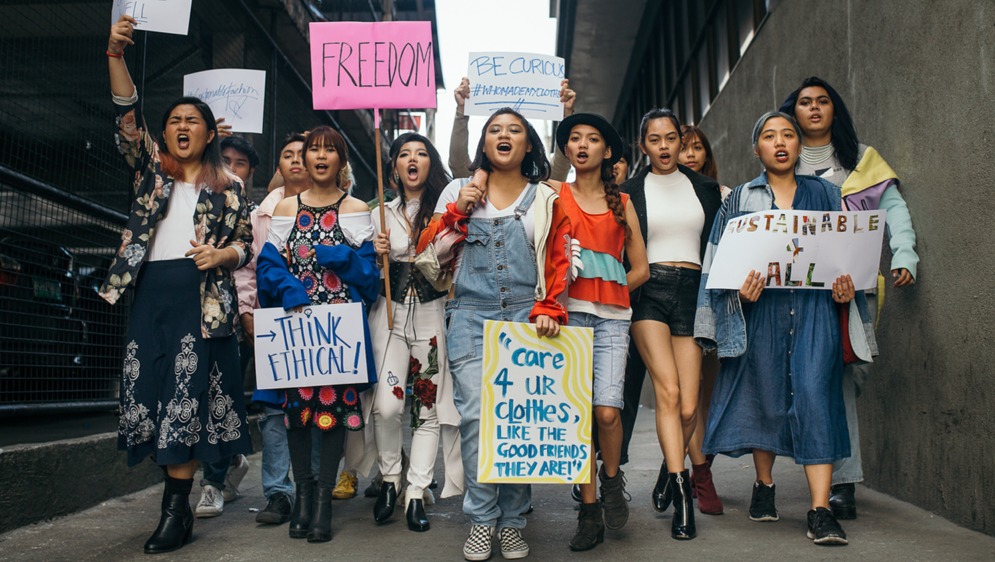- About
- Topics
- Picks
- Audio
- Story
- In-Depth
- Opinion
- News
- Donate
- Signup for our newsletterOur Editors' Best Picks.Send
Read, Debate: Engage.
| July 23, 2019 | |
|---|---|
| topic: | Innovation |
| tags: | #digital-clothing, #climate change, #fashion |
| partner: | Screen Shot |
| by: | Yair Oded |
The pioneer of this technology is the Norwegian company Carlings, which launched its first digital clothing line back in November in response to a swelling number of influencers purchasing one-off outfits exclusively for social media purposes. Their collection, titled ‘Neo-Ex’, derived its style from video games such as Tekken, and featured bright neon colours and futuristic looks. Influencers and instagramers could purchase one of the 19 outfits on offer for £9 to£30 and submit a photo of themselves to Carlings’ 3D designer team, which would then digitally tailor the clothes onto the buyer’s image.
The digital-clothing trend caught on like wildfire, and now companies around the world, such as Moschino, The Fabricant, and Nike, have been dropping their very own virtual designs.
Aside from being financially accessible (at least for the time being), virtual clothing offers a solution to the polluting habits of the fashion industry— currently responsible for 10 percent of the world’s carbon footprint and the second-greatest contaminator of local freshwater around the world.
In an interview for Elle, Kicki Perrson, brand manager at Carlings Sweden, said, “By selling the digital collection at £15 per item, we’ve sort of democratised the economy of the fashion industry and at the same time opened up the world of taking chances with your styling, without leaving a negative carbon footprint”. Persson further stated that due to the incredibly positive responses Carlings is expected to launch its second virtual clothing line this summer.
Naturally, influencers seem enthused at merging fashion with the virtual realm. Daria Simonova told Elle, “I really love this idea because firstly, it’s environmentally-friendly and secondly, clothing nowadays is more like an art form for social media. Digital clothing is super convenient, and the design potential is huge because it’s way cheaper”.
Overall, digital clothing seems to be a fairly promising innovation. It is eco-friendly, affordable, and allows for uninhibited creative freedom. Yet, the ultimate impact of virtual fashion will depend on the future of this rising technology and its application.
Virtual clothing currently exists as a social-media-centred enterprise, and its main function is to be worn online for promotion purposes and likes-mining. It seems, however, that the majority of fashion-industry waste isn’t generated by influencers, but by the masses whose lives don’t revolve around Instagram and who gain more satisfaction by touting their outfits in the real world. And so as long as virtual clothing is trapped within the confines of social media, its ability to scale-down fashion induced pollution would be limited.
Digital fashion could prove far more environmentally friendly if it is ultimately used as an augmented reality feature that replaces real clothes. Furthermore, if clothing-design softwares became a household product it would enable millions of people to run wild with their imagination while spending zero resources on attire. True, augmented reality isn’t likely to penetrate the mainstream market in the immediate future, but it isn’t light-years away from us either, and we would greatly benefit from beginning to visualise its potential contributions to society—as far as fashion is concerned.
Virtual fashion is on a trajectory that can only be expected to accelerate and expand over the next few years. It remains to be seen whether it will live up to its ideal of rendering the fashion industry more sustainable or simply fuel the social-media inferno of brand and image-building.
By copying the embed code below, you agree to adhere to our republishing guidelines.
